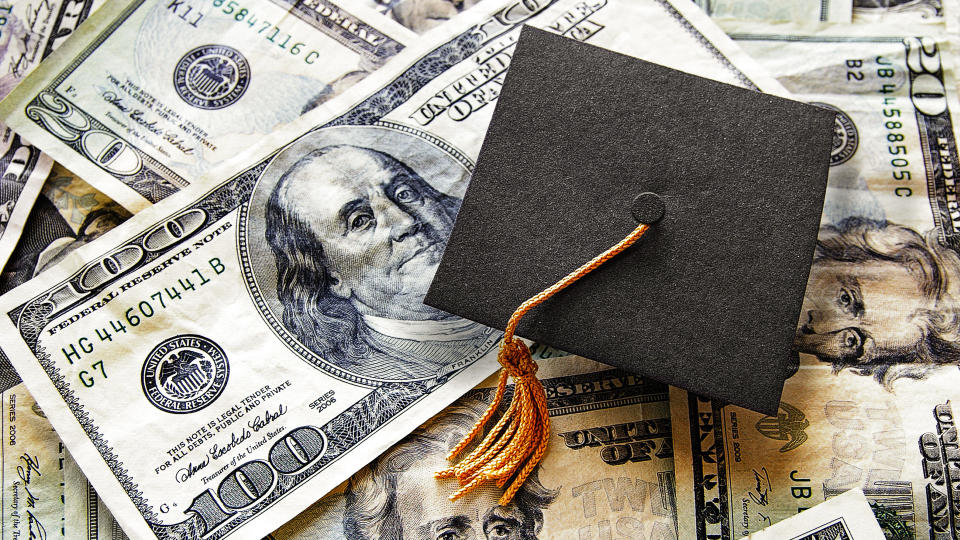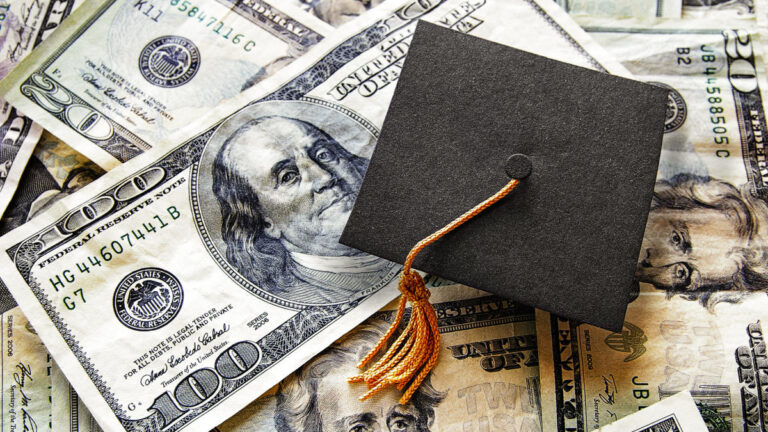
Total student loan debt in the United States is approximately $1.77 trillion. This number isn't all that surprising considering that millions of Americans have education-related debt. In fact, according to a recent study, the average borrower owes about $37,717 in federal student loans and $40,505 in private student loans.
Student loan moratorium officially ends in October: Are you ready to start making payments on average of $503 again?
Learn: How to get cashback on everyday purchases
There has been a lot of discussion over the past few years about student loan repayment and forgiveness. Since President Biden took office, the Biden-Harris administration has forgiven more than $116.6 billion in student loans. The Department of Education continues to explore ways to forgive student loans, especially for students on income-based repayment plans.
While this is good news for millions of borrowers, it may not be enough for those who don't qualify for student loan forgiveness or who owe six figures in education-related debt. And with student loan payments set to resume in October 2023, many borrowers are concerned about how they will manage their debt.
When the student loan repayment moratorium ends, many borrowers worry about how it will affect their financial situation. In a recent GOBankingRates survey, about 14% of respondents said they thought they wouldn't be able to pay all their other bills. Nearly 10% say they expect to take on more debt to pay for everything, and nearly 8% say they'll probably have to skip some student loan payments .
If you have a large amount of student loan debt (say, six figures), you may feel overwhelmed. According to experts, here are some approaches you can take to better manage your debt and start paying it off.
Consider financing assistance programs
A variety of loan assistance and loan forgiveness programs exist, especially for those working in certain industries. These programs may relieve you of all or part of your debt.
Student loans: 10 expenses to cut from your budget when you start paying again
“Loan assistance programs are relatively common in certain professions (doctors, nurses, dentists, pharmacists, lawyers, teachers, veterinarians),” said Robert Heumann, chief revenue officer at Credible. . “These typically require two or more years of work in a low-income facility/high-needs community in exchange for partial loan repayment.”
Federal student loan borrowers may also be eligible for student loan forgiveness.
“Consider federal forgiveness programs such as Public Service Loan Forgiveness for Social Workers. [government] Loans for employees and teachers will be forgiven,” Human added.
Switching to a new repayment plan
If you have federal student loans, you may want to switch to a different repayment plan. Depending on your plan, your monthly payments may be more reasonable or your repayment period may be shorter. Certain plans work based on your income, so you can pay what you can afford.
Please note that federal student loans may be eligible for student loan forgiveness. Ask yourself if you want to pay off your debt or wait for it to be forgiven.
“With the new REPAYE/SAVE plan, student loans will be forgiven in 20 years (or less) for undergraduate loans and 25 years for graduate loans,” said Jay Zigmont, Ph.D., CFP, founder of ChildFree Wealth. Stated. “It may sound like a long time, but unless you have received an on-campus deferment, you may be able to receive credit for the time you have already taken out the loan.
“If you intend to wait for forgiveness, it is imperative that you enroll in the new SAVE plan,” he added. The new SAVE plan will reduce your payments and stop accruing interest above the minimum payment amount. It stops debt from increasing.
“On the other hand, if you intend to pay off your student loans before they are forgiven, SAVE may reduce the amount of payments you need to make, but you will have to pay an additional fee each month. .”
pay more than the minimum amount
If you're tight on cash, paying more than the minimum amount can be difficult. But if you can manage it, you could save money and get out of debt faster.
By paying more than the minimum amount, “you can significantly reduce the total interest paid over the life of the loan,” says James Allen, CPA, CFP, CFEI, and founder of Billpin.com. states. “Additionally, consider using extra income, such as a bonus or tax refund, to make a lump sum payment on your loan. It's like chipping away at a mountain with a pickaxe; every little bit helps.”
student loan refinance
Refinancing your student loans can make your monthly payments easier to manage, especially if you qualify for a lower interest rate. However, if you refinance your federal student loans, you will no longer be eligible for federal forgiveness programs.
“One approach is to refinance your loan, which may lower your interest rate and monthly payments,” Allen says. “Companies like SoFi, Credible, and Splash Financial offer competitive refinancing options.”
make a long term plan
“Having six figures of debt early in my career, I understand firsthand the burden of financial debt such as student loans,” said Lisa Fischer, Chief Lending and Growth Officer at Mission Lane. Ta. “But having debt doesn't mean you can't enjoy life. You just have to be careful. First, how much debt can you pay off each month while still enjoying life while meeting other financial obligations? Ask your lender, parent, or advisor as many questions as possible to understand your financial situation, such as whether or not you are eligible. It may also help you discover relief options you weren't aware of. .”
Once you have a plan in place, Fisher suggests tracking your finances.
“Keeping track of everything not only helps you take responsibility for your spending, but also helps you save money on a regular basis,” she said. “Tracking my finances on a monthly basis is something I started doing when I was recovering from debt, and I still find it useful now that my financial situation has improved.”
Create a budget and prioritize your financial responsibilities
“Balancing student loan payments and other financial responsibilities can feel like trying to sail a boat through stormy seas, with each wave bringing new bills and financial stress. It feels like the beacon of stability is far away,” Allen said. “But it's not impossible.”
Allen suggests creating a budget that includes all your debts, from student loans to rent to groceries. If your income is stable, automate your payments to avoid missing payment deadlines. Or consolidate your student loans to make payments easier to manage.
Use the debt avalanche or debt snowball repayment method
If you're managing multiple financial obligations or large student loans, you may want to consider using a proven debt repayment method. Two common options are the debt avalanche method and the debt snowball method.
Human says that the debt snowball method involves “focusing on the loan; [the] Pay off your minimum balance first and make additional payments until it's paid off. Then move to the next lowest balance, and so on. This won't save you money on interest, but it will give you some quick returns to motivate you. ”
The debt avalanche method, Human explains, “concentrates on the loan with the highest interest rate first and makes additional payments until it's paid off.” Then move to the next highest interest rate, and so on. This minimizes interest costs and facilitates debt prioritization. ”
Schedule for repaying six-figure student loans
“The schedule for repaying six-figure student loan debt will vary depending on factors such as income, interest rates, and personal budget,” Allen said. “However, it is not uncommon for repayment plans to span 10 to 20 years.”
Doug Ornstein, CFA, senior integrated solutions manager at TIAA Wealth Management, provided the following example based on a 15 to 20 year repayment schedule.
“If you start with a $100,000 loan at 6% interest, you should be able to pay off your debt in about 18 years by paying $500 a month. However, the amount of your monthly payment is very important. If your monthly payment is 750 Dollars, you'll pay it off in full in 12 years, all else being equal, saving you more than $20,000 in interest payments.”
Allen added, “It's like running a marathon, not a sprint. You have to pace yourself, keep your eye on the finish line, and understand that every step, no matter how small, brings you closer to your goal.'' there is.”
GOBankingRates Details
This article originally appeared on GOBankingRates.com: Expert: How to pay off six-figure student loans


